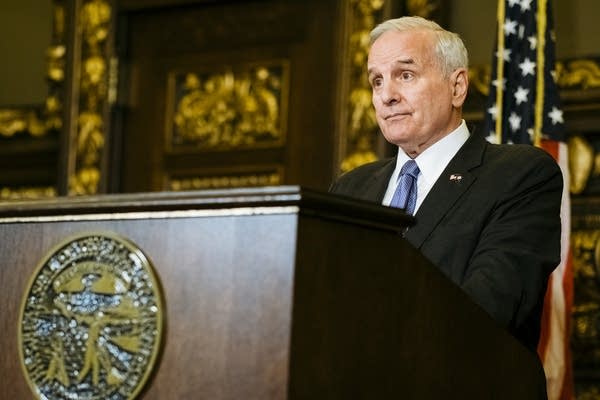Latest budget forecast tips Minnesota into the red

State officials released an economic forecast Tuesday showing a deficit at the end of the current two-year budget cycle. The numbers are grim news headed into Gov. Mark Dayton's last year in office after years of budget surpluses.
Evan Frost | MPR News file
Go Deeper.
Create an account or log in to save stories.
Like this?
Thanks for liking this story! We have added it to a list of your favorite stories.


